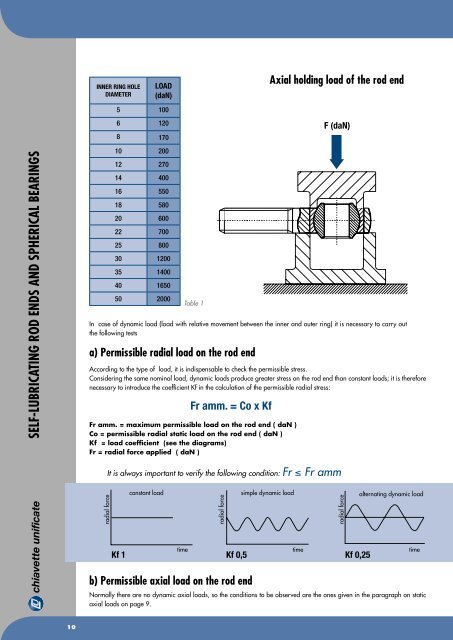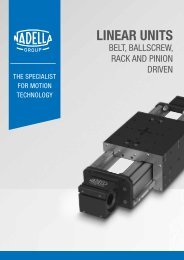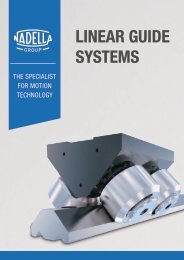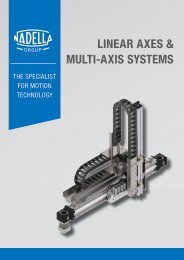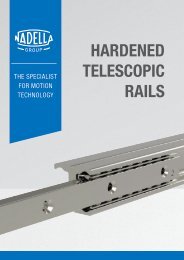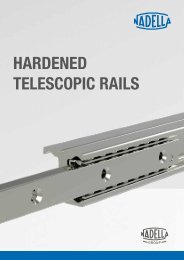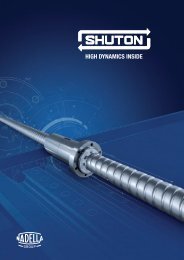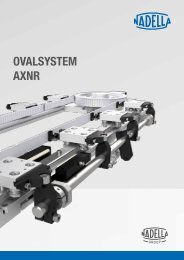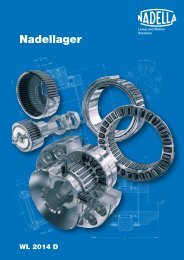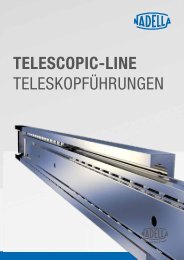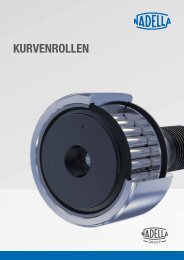Chiavette Unificate Hauptkatalog
Gelenkköpfe Chiavette
Gelenkköpfe Chiavette
You also want an ePaper? Increase the reach of your titles
YUMPU automatically turns print PDFs into web optimized ePapers that Google loves.
INNER RING HOLE<br />
DIAMETER<br />
LOAD<br />
(daN)<br />
5 100<br />
6 120<br />
8 170<br />
Axial holding load of the rod end<br />
F (daN)<br />
self-lubricating rod ends and spherical bearings<br />
10 200<br />
12 270<br />
14 400<br />
16 550<br />
18 580<br />
20 600<br />
22 700<br />
25 800<br />
30 1200<br />
35 1400<br />
40 1650<br />
50 2000<br />
Table 1<br />
In case of dynamic load (load with relative movement between the inner and outer ring) it is necessary to carry out<br />
the following tests<br />
a) Permissible radial load on the rod end<br />
According to the type of load, it is indispensable to check the permissible stress.<br />
Considering the same nominal load, dynamic loads produce greater stress on the rod end than constant loads; it is therefore<br />
necessary to introduce the coefficient Kf in the calculation of the permissible radial stress:<br />
Fr amm. = Co x Kf<br />
Fr amm. = maximum permissible load on the rod end ( daN )<br />
Co = permissible radial static load on the rod end ( daN )<br />
Kf = load coefficient (see the diagrams)<br />
Fr = radial force applied ( daN )<br />
It is always important to verify the following condition: Fr ≤ Fr amm<br />
radial force<br />
constant load simple dynamic load alternating dynamic load<br />
radial force<br />
radial force<br />
time<br />
Kf 1 Kf 0,5 Kf 0,25<br />
time<br />
time<br />
b) Permissible axial load on the rod end<br />
Normally there are no dynamic axial loads, so the conditions to be observed are the ones given in the paragraph on static<br />
axial loads on page 9.<br />
10


